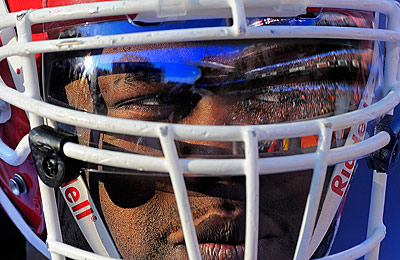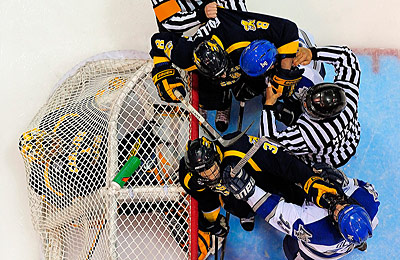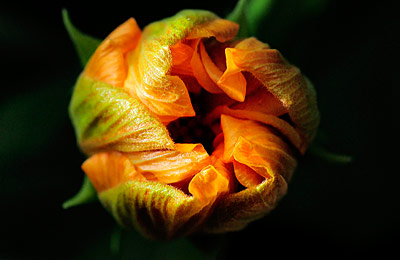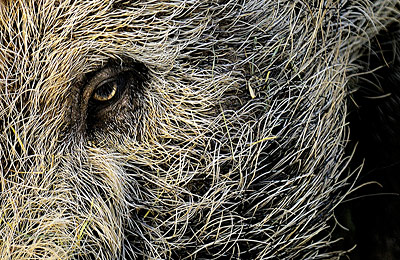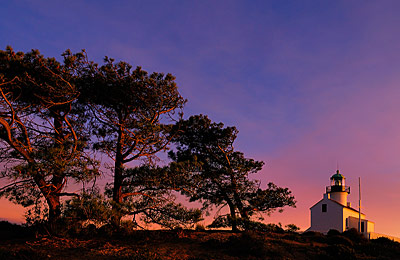Workshop at the Ranch – February 2008 – The Nikon D300
![]() Hi and welcome to this edition of Workshop at the Ranch. Commissioner Gordon had super heroes Batman and Robin to rely on when it came to fighting crime in Gotham City. Today’s photographer has the Nikon D3 and the Nikon D300. This Dynamic Duo of cameras offers the photographer a one, two punch that is perhaps unbeatable in the industry and, like Batman and Robin, they work well in low light situations … It’s kind of a bat thing. But, how does the photographer choose between these two terrific cameras, or can they use both. I have already written my thoughts about the Nikon D3 in Workshop at the Ranch and On the Road articles over the past few months, this month I want to take a look at the Nikon D300 in an effort to help some of you make your choice. ….. “Holy Decision Making Batman!”
Hi and welcome to this edition of Workshop at the Ranch. Commissioner Gordon had super heroes Batman and Robin to rely on when it came to fighting crime in Gotham City. Today’s photographer has the Nikon D3 and the Nikon D300. This Dynamic Duo of cameras offers the photographer a one, two punch that is perhaps unbeatable in the industry and, like Batman and Robin, they work well in low light situations … It’s kind of a bat thing. But, how does the photographer choose between these two terrific cameras, or can they use both. I have already written my thoughts about the Nikon D3 in Workshop at the Ranch and On the Road articles over the past few months, this month I want to take a look at the Nikon D300 in an effort to help some of you make your choice. ….. “Holy Decision Making Batman!”
Hi and welcome to this edition of Workshop at the Ranch. Commissioner Gordon had super heroes Batman and Robin to rely on when it came to fighting crime in Gotham City. Today’s photographer has the Nikon D3 and the Nikon D300. This Dynamic Duo of cameras offers the photographer a one, two punch that is perhaps unbeatable in the industry and, like Batman and Robin, they work well in low light situations … It’s kind of a bat thing. But, how does the photographer choose between these two terrific cameras, or can they use both. I have already written my thoughts about the Nikon D3 in Workshop at the Ranch and On the Road articles over the past few months, this month I want to take a look at the Nikon D300 in an effort to help some of you make your choice. ….. “Holy Decision Making Batman!”
My hope in likening the Nikon D3 and D300 respectively to the Caped Crusaders of crime fighting is to bring an immediate picture to your mind of our two heroes. Make no mistake about it, Batman is the leader and holds the keys to the Bat Mobile, but, Robin is clearly more than just a back up and carries responsibility to get the job done as well. I have received well over a hundred emails asking me, …”is the D300 a D3?” The answer is no, the D300 is not a D3 … but depending on what you require from a camera the D300 might be the perfect choice for you whether you are a professional or an amateur. With it’s 12.3 megapixels and multitude of functions and modes one might very well think the D300 stands equal to a D3 but keep in mind the D300 is a DX format and not a full frame FX format CMOS sensor like the D3. It is the Nikon FX Format CMOS sensor in the D3 that makes it the industry leader when it comes to low noise at extremely high ISO settings like ISO3200 and ISO6400. Please do not misunderstand me, the quality of the D300 file is terrific and exceeds all other cameras in its class (and perhaps some cameras in upper classes as well), but, realize that there is a difference between these two cameras. The D3 uses the Nikon FX format CMOS sensor that measures 23.9mm X 36mm. The D300 uses the Nikon DX format CMOS sensor that measures 15.8mm X 23.6mm. Each pixel of a D3 is 8.45 microns large while the D300 pixel size is 5.49 microns large. The larger pixel size of the D3 enables the superior gathering of light which translates to near noiseless files at extremely high ISO settings, increased dynamic range and greater resolution. The D300’s pixel size, although smaller than that of the D3’s, is still revolutionary in the industry and offers low noise levels at high ISO settings, but, is not quite the equal of the D3. It is my opinion, regarding noise levels up to ISO800, that the D3 and D300 appear nearly equal in image quality, but, if your business depends on photographing situations that require extremely high ISO settings above ISO2000 then you should consider the Nikon D3. Yes, the D300 is capable of ISO3200 and it’s files are certainly publishable, but, the D300’s ISO2000 looks similar to the D3’s ISO5000. Let’s keep in mind that having low levels of noise while using high ISO settings above ISO800 in any camera is ground breaking to say the least, but, the D300 is slightly out matched by the D3 in the category of high ISO settings. Robin could only go so far in his crime fighting abilities before Batman swung in on the Bat Cable and provided the final KAPOW! and ZONK! to the Penguin or the Riddler. As Police Chief O’Rourke would often exclaim, “Saints be Praised Batman!”
That being said, what about the photographers who do not require ISO3200 or higher. Well, let’s see how the Boy Wonder of SLR’s measures up to the Caped Crusader of Cameras in some other categories and functions. Golly Gee Wiz!, the optional MB-D10 Battery grip allows the D300 to shoot 8 frames per second at 12 bit depth, while the D3 allows 9 fps at 14 bit depth. The D300 has one Flash Card slot while the D3 has two. The weight of the two cameras is quite different. The D300 without the MB-D10 Battery Grip is only 1.8 lbs, while the D3 is 2.7 lbs.. … a difference and perhaps an advantage for the D300 and those who photograph adventure sports and activities while actually participating in them or those who suspend remote cameras in precarious places. Combine the D300’s lighter weight with its DX format sensor (cropped sensor as it is sometimes called) which can use smaller/shorter lenses to produce the same field of view image size as the full frame FX format sensor of the D3. …. Golly Batman, I hadn’t thought of that. Like the D3, the D300 offers Nikon’s 3D Auto Focus Tracking and 51 focus points, Scene Recognition System, Live View, Picture Control choices, 3 inch wide 920,000 dot LCD Monitor screen, etc, etc, etc. The price is certainly a notable different as well. The D3 rings in around $5,000 while the D300 costs far less at around $1,800. So, is the D300 a D3? …no, the Nikon D300 is its own show which is why I bought one, and after using it this past month I recommend it highly and here are some reasons why……….
So, is the Nikon D300 a D3? … no, it’s a D300 and is an excellent choice for most any photographer, professional or armature. So, what should the photographer consider when purchasing a camera? Well, do you photograph Landscapes or Sports, Portraits or News? Is your work published in magazines and books, or do you make print enlargements and if so, how large? Are you photographing in a studio with lighting or are you hiking, climbing and hanging from a rope on a mountain when you photograph? Perhaps you are taking pictures of the family vacation or perhaps you are capturing a moment in a crowded market place in Constantinople for National Geographic magazine. My advise is to choose the camera that will serve your purposes efficiently and with a quality that compliments the final market place of the picture be it your email to grandma, Associated Press or Time magazine.
Capturing sports action images often times requires shooting at a fast rate of frames per second. Both the D3 and D300 offer this feature, 9 fps and 8 fps respectively, but the D300 will require purchasing the additional MB-D10 grip to achieve 8 fps. Some sports events are during the daytime, but, some sports are often played indoors or at night under low light conditions. If the majority of your sports photography occurs in venues where ISO settings of 3200 and 6400 are required, sounds like a Nikon D3 is in your future, but, you say you need two camera bodies for sports coverage, one with a long lens and one with a short lens to cover the game completely………. Holy Neck Strap! ……. Perhaps two D300’s will be the affordable solution.
Landscape and Nature images are less likely to require the extremely high ISO settings that some sports events require, so maybe a D300 is the right choice for you, but you say you need to make 3ft X 5ft prints enlargements for a gallery … Remember there is a slight difference between the two cameras regarding individual pixel size and resolution. Here again it helps to factor in the final market place for your pictures when making your camera purchase.
Perhaps your lively hood depends on news coverage and photojournalism assignments as a freelancer for a wire service. One minute you are in a dimly lit courtroom photographing OJ at ISO6400 and the next minute your editor sends you to do a portrait of the mayor at his office and there is no time to go back home and get your studio lights ….. Gee Wiz Commissioner!, … launch the D3 signal in the sky.
For someone who must travel light and perhaps be inconspicuous and not viewed as a professional, the D300 is an excellent choice. The Nikon D300 camera without the additional MB-D10 grip is small and lightweight, only 1.8 lbs. For the photographer who is climbing or hiking for hours at a time or if you are photographing in a foreign country where it is sometimes advisable to appear more like a tourist than a professional photographer the D300 would probably serve you well. Access to your subject is a very important factor in photography and I for one will make good use of my D300 without the MB-D10 grip in those situations where I need to be unnoticeable and stealth like to accomplish the job.
Holy Dilemma Batman! …which camera is best for me and the kinds of pictures I take?
Well, I hope this article has helped those of you considering the purchase of a camera make a more educated decision. Both cameras are revolutionary. Both cameras produce fantastic quality files with great detail and color. Both cameras offer the photographer advantages in given situations. Think it over, consult Alfred or the Bat Computer, then run to the Bat Pole and jump into the Bat Mobile and drive on down to your local camera store in Gotham City ……. or get on the Bat Phone and call up Jody at Roberts Distributors in Indianapolis, Indiana where I have bought all my equipment for over 20 years (800-726-5544.) ………. Saints Be Praised Batman and Robin!
I’ll see you next time here on Workshop at the Ranch.
Adios. Dave



